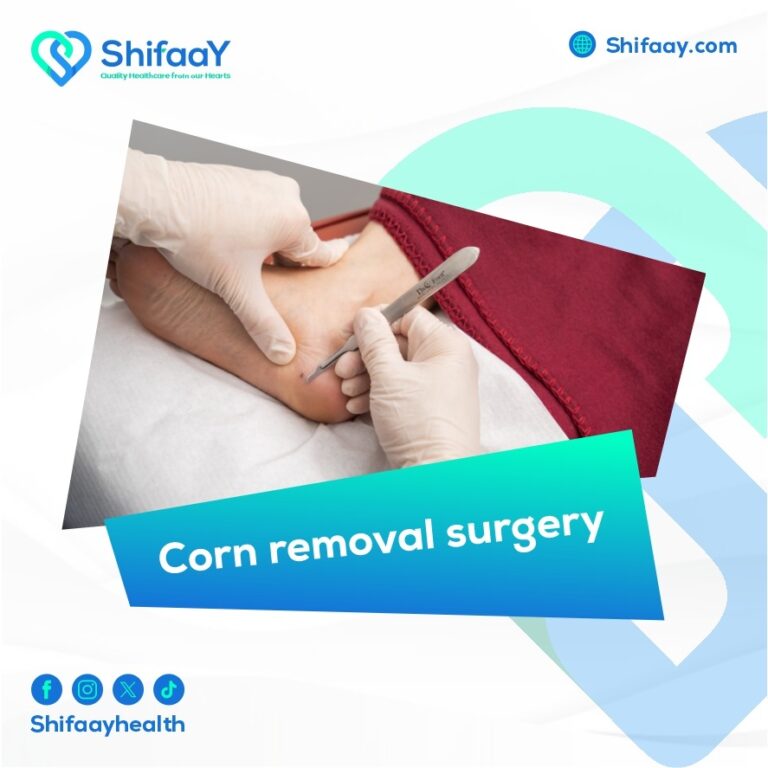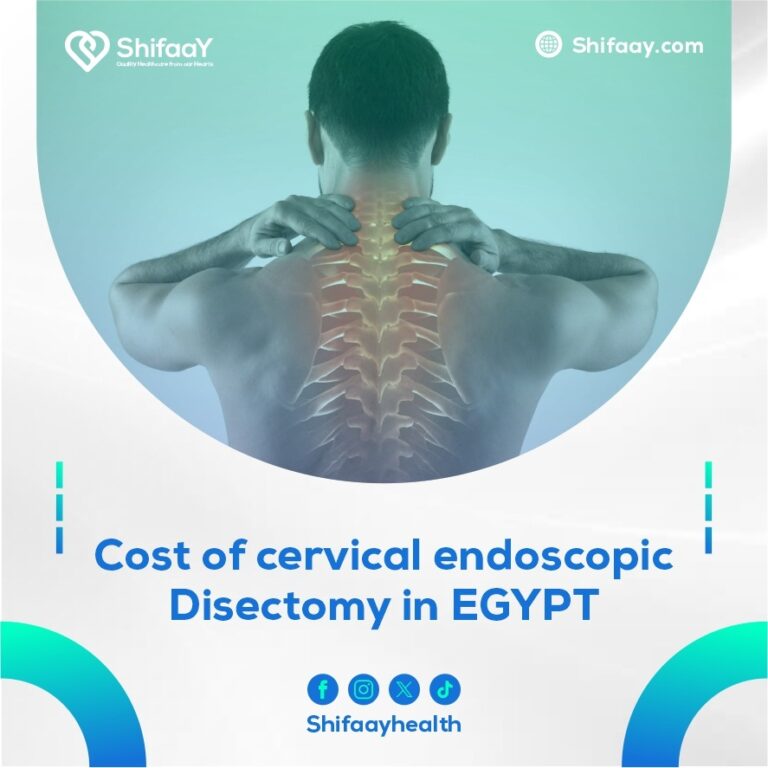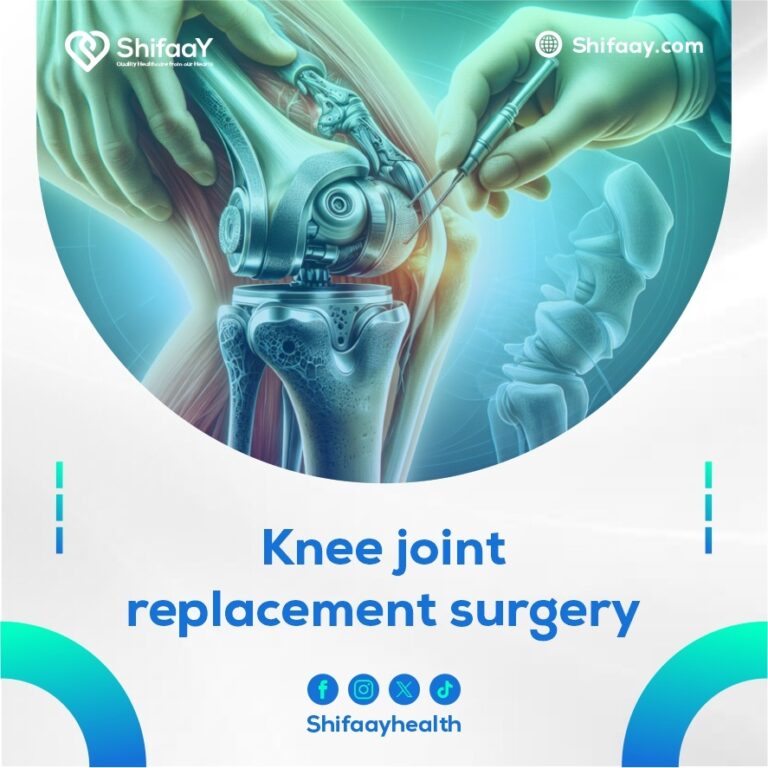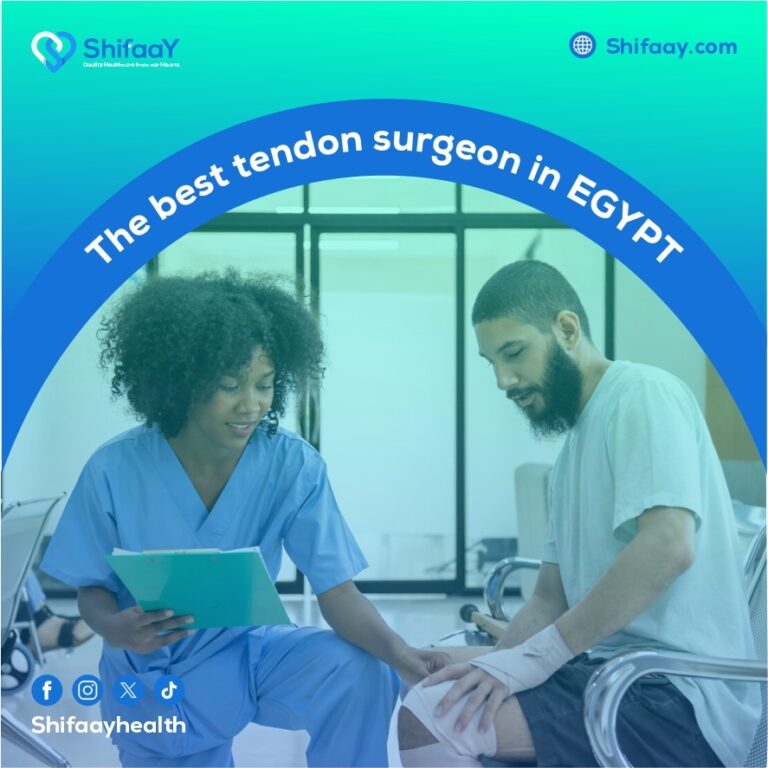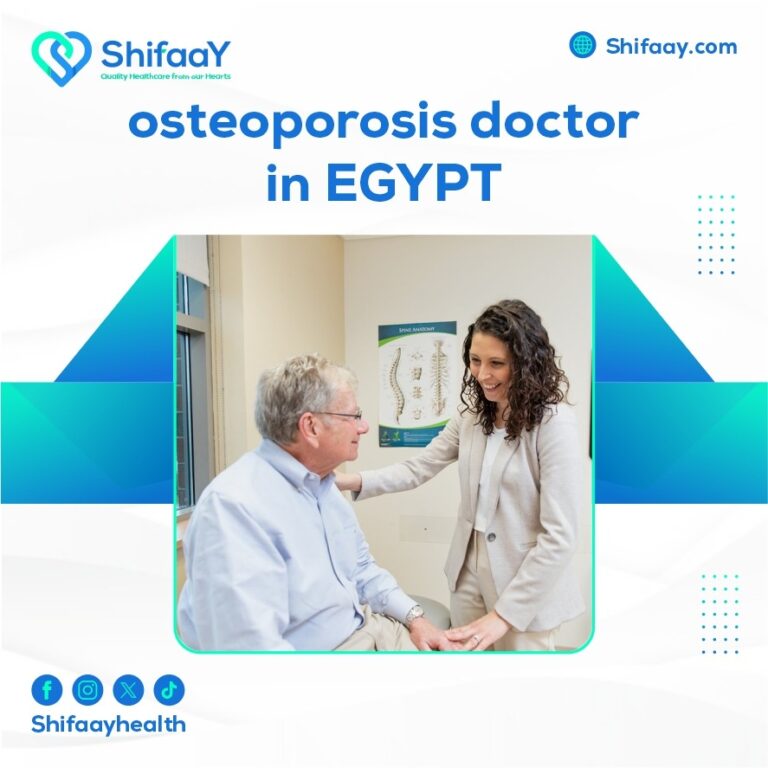Pediatric bone deformity doctor
Finding the best pediatric bone deformity doctor in Egypt is always necessary for treating skeletal bone deformities in children. This doctor should have a great deal of experience and skill in treating pediatric bone deformity conditions and be knowledgeable about all kinds of congenital deformities. As a result, the various forms and images of bone deformities in children, such as short bones, bone protrusion, and even spinal deformities, may continue to be a source of concern for many. Shifaay’s pediatric bone deformity doctor is among the most skilled and knowledgeable medical professionals in the field. They specialize in evaluating and diagnosing all pathological conditions as well as choosing the most appropriate and successful therapeutic approaches, including physical therapy, surgery, and other forms of treatment.
Even though there are many doctors in Egypt who treat bone deformities, finding the best pediatric bone deformity doctor still requires more research, focus, and precision. This highlights the importance of quickly examining and diagnosing all types of congenital deformities in children and treating them with safe, effective therapeutic methods. First and foremost, we would like to learn about the causes and different kinds of pediatric bone deformities before learning about the top pediatric bone deformity doctors in Egypt as well as the treatment centers for these conditions.
Bone deformities, which are abnormal twisting of the bones, can be congenitally defective in children or develop over time as a result of trauma to the child. In light of that, the deformities can be categorized as congenital, which arise from genetic genes resulting from consanguineous marriage or other factors, or as a result of the mother contracting a bacterial or viral illness while she was pregnant, etc., or as a result of injuries or accidents that may result in infection with one of the serious diseases that affect the bones, like rheumatoid arthritis or hereditary neurological diseases. All of these illnesses have the potential to seriously damage bones, and if they are not treated, children may develop numerous bone abnormalities. Whether the deformity is inherited or the result of an injury, you should trust the best pediatric bone deformity doctor in Egypt, who practices at Shifaay, the best medical tourism center in Egypt.
Pediatric bone deformity surgeon in Egypt
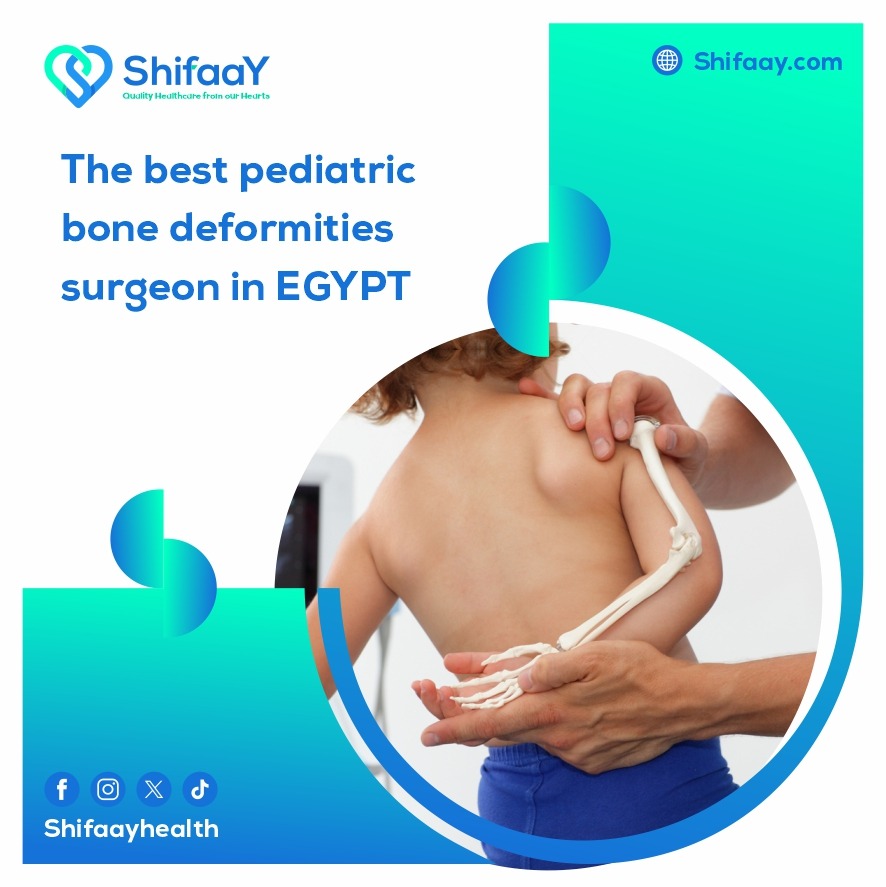
Orthopedic surgery is always performed on children in order to correct or modify one of the congenital bone deformities that always occur in children’s bones. These deformities can be caused by genes passed down from parents, as well as accidents or injuries that the child has experienced. Pediatric bone deformity surgery also serves to prevent further deformities in the child. Children with orthopedic issues may not all have the same issues because each child’s body is still developing and responds differently to different stimuli based on where they are in their development. Osteomalacia and congenital deformities are the most common bone problems that children can have. The child may need to see the best pediatric bone deformity surgeon in Egypt in order for him to properly examine and diagnose the condition and carry out his duties in determining and explaining the most appropriate and effective therapeutic approach, whether non-surgical or surgical.
Shifaay’s doctor is one of the best pediatric bone deformity doctors in Egypt. This doctor is regarded as one of the top professionals in Egypt practicing pediatric bone deformity surgery. He achieves this reputation by using the most up-to-date approaches, advanced research, and recent medical technological techniques. He also has a great deal of experience and competence in this field, as well as great competence and extensive skill in examining and diagnosing all pathological cases and identifying the most appropriate and effective therapeutic methods with extreme skill and accuracy. He makes a significant contribution to providing optimal medical care and high-quality healthcare at affordable, straightforward rates that suit your needs and fully accommodate your child’s requirements.
Also follow: The best tendon repair surgeon in Egypt
The best bone deformity doctor in Egypt
Shifaay Center’s pediatric bone deformity doctor is regarded as the best orthopedic doctor in Egypt. This brilliant doctor is well-liked and trusted in a wide range of medical cases. His wealth of experience and high qualifications have made him highly qualified to treat all challenging cases involving bone deformities. In addition, he has the experience, skill, and complete understanding of all the critical components and factors that go into a successful examination and diagnosis of any pathological case, including the ability to use the most recent and effective treatments to treat bone deformities in Egypt.
Bone deformities are one of the difficult conditions that many parents rush to treat for the better future of their children. We therefore advise you to deal with Shifaay Center, the best medical tourism center in Egypt as it is one of the successful medical facilities that has been able to offer a wonderful and professional elite of doctors who are adept and skilled in treating all bone deformities in children. These doctors have complete knowledge and extensive experience in handling all medical cases, including treating bone diseases with the most effective therapeutic approaches, ensuring a speedy recovery for your child.
The best pediatric bone deformity doctor in Egypt
One of the most prevalent and significant issues affecting many children in Egypt is bone disease. Numerous children suffer from multiple and distinct bone diseases, some from osteoporosis and some from pain and inflammation of the joints and muscles, among other various diseases from which the child may suffer from birth. Consequently, many parents may find themselves repeatedly searching for the best pediatric bone deformity doctor in Egypt.
In response, we have offered you Shifaay Center, which is among the greatest and best medical tourism centers in Egypt. It has taken into account the availability of numerous top doctors who specialize in pediatric bone deformity, and its medical staff is notable for its great experience and broad skill in evaluating and diagnosing all medical cases as well as accurately identifying all forms of orthopedic diseases. This includes performing all kinds of orthopedic surgeries on children and also writing prescriptions for the proper medications for each case individually while upholding and adhering to all international safety standards.
Excellent pediatric bone deformity doctor
Many parents in Egypt are constantly searching for an excellent pediatric orthopedic doctor after observing some unusual symptoms in their kids, like a curved back or spine, or the emergence of multiple issues with the muscles and bones. These symptoms may manifest in children but not in adults because children are still in the growth stage, which is the most susceptible to wounds, infections, and a variety of deformities that vary from child to child. Additionally, because many of the most common bone diseases are prevalent in children, the bones may heal quickly and have the capacity to return to their natural form as they grow. As a result, you should consult with the best pediatric bone deformity doctor in Egypt, who is also practicing at Shifaay Center, as he is among the best pediatric bone deformity centers in Egypt.
Here at Shifaay Center, the best medical tourism center in Egypt we offer you the best pediatric bone deformity doctor in Egypt, as well as the most highly qualified medical personnel from various nationalities who specialize in pediatric orthopedics. They possess extensive experience and exceptional competence in assessing and diagnosing all pathological cases with remarkable precision and expertise using the most advanced medical technological methods and techniques, all thanks to their training on how to use the best modern medical techniques and capabilities, as well as in dealing with children with great accuracy and professionalism.
The best doctor for treating deformities
When parents see abnormalities in their children, like a curvature of the spine or back, etc., they usually look for the best doctor for treating deformities in Egypt. Pediatric bone deformities can range from congenital deformities, which are caused by the non-formation of a vertebra in the spine, to curvatures of unknown origin. Pediatric orthopedic deformities can range from congenital deformities (caused by the non-formation of a vertebrae in the spine) to curvatures of unknown origin. Thus, you must search for the best doctor for treating deformities in Egypt who can assess, identify, and treat these deformities using the most efficient therapeutic approaches. Just allow me to introduce you to one of the outstanding orthopedic doctors at the Shifaay Center. It is one of the top and most prosperous orthopedic medical centers in the Middle East and the only one eager to offer a professional elite of excellent medical staff distinguished by their high experience and great skill in this field, having received their training in the most prestigious European hospitals and holding all academic certificates that truly confirm their competence, which may ensure you access to the best medical care of the highest caliber.
Modern technology has made it possible to treat bone deformities in both children and fetuses, so if you are a parent of a child with any kind of bone deformity and would like to get in touch with the best doctor for pediatric bone deformities in Egypt, this is the time to act. Shifaay’s doctor possesses extensive experience in the field of pediatric orthopedics and can effectively alleviate your child’s pain. Shifaay Center is the greatest and biggest medical tourism center that many parents have seen. It is famous, reputable, and has a lot of experience in this field. It is also one of the successful international centers that has always been distinguished by offering the best medical care in compliance with all international medical standards and foundations.
Treatment of hand deformities in children
Even though treating hand deformities in children can be a delicate and challenging therapeutic matter, advancements in medical science have led to the development of numerous new, effective therapeutic approaches that do not require the use of surgical procedures or medical support. and the most famous of these is the MCGR technique, which is one of the advanced contemporary methods that the best pediatric bone deformity doctor in Egypt has mastered for treating all pediatric hand bone deformities. With the use of this technology, children with hand deformities of any kind, particularly those under the age of ten, can be treated using remote-controlled magnetic rods.
The severity of hand deformities in children can range from a minor irregularity like uneven fingers to a severe deformity like total bone loss. Because of this, hand deformities may be regarded as one of the more challenging and complex issues a child may face as he grows. For this reason, Shifaay Center offers the best pediatric bone deformity doctor in Egypt, who is highly qualified and brilliant and is at the forefront of the medical community when it comes to treating bone deformities in children. Additionally, the center is the only one that is able to accurately diagnose every medical case with the utmost skill and precision, as well as prescribe the right medications and drugs with great professionalism and efficiency. The primary objective of treating hand deformities in children at the Shifay Center, an Egyptian medical tourism facility, is to enhance the child’s hand’s overall appearance and capacity to perform all daily tasks and activities without difficulty. It should be mentioned that there are numerous treatment options available for children with hand deformities; however, the best course of action may vary depending on the child’s needs and condition. The following are some of the most popular methods for treating children’s hand deformities:
● Tendon transfer.
● Move toe to thumb.
● Correction of contractures.
● Performing surgery to remove extra fingers or separate joined fingers.
● Prosthetic limb installation is typically employed when surgical procedures are not suitable for the patient’s medical condition.
● Splinting the affected limbs.
● Manipulating and extending limbs.
● placing outside equipment that aids in realigning the hands or fingers that are malformed.
● Physical therapy, as it helps increase the strength and function of the hand.
● Skin grafting is the process of replacing and attaching skin to a part of the hand where the skin has been lost or removed during surgery.
Congenital hand deformities
Congenital malformations refer to a variety of issues that result in an imperfection in the development of a child’s body parts and their functional characteristics. Though they can happen at any stage of pregnancy, they typically manifest in specific cases during the first three months, when the fetus’s organs begin to form. It is important to remember that congenital hand deformities can affect the hand or fingers entirely and account for 10% of cases of congenital deformities overall. What are congenital hand deformities? This is what we will learn about in the following lines:
● Clinodactyly:
A medical condition that causes permanent curvature in one or more of the hand’s fingers, usually the fifth finger (the pinky), with curvature toward the fourth finger (the ring finger),. This condition could be caused by congenital deformities that prevent the middle fifth finger from fully developing, resulting in it being wedge-shaped rather than straight.
● Camptodactyly:
A pathological condition that causes permanent curvature in one or more of the hand’s fingers, potentially leading to a fixed deformity between the proximal phalanges in the joints. This condition most commonly affects the fifth finger, also known as the “pinky,” and is caused by a dominant genetic disorder. Incomplete genetics means that if a person carries the genes for this disease, the condition may manifest in one or both hands, or it may not appear at all. These genes are located on chromosomes 3q11.2-q13.12.
● Ectrodactyly/cleft hand:
A cleft hand, also known as a “two-fingered hand,” is a medical condition that arises from an uncommon congenital defect that a child is born with. This defect causes the fingers of the hand to not form normally during the period of fetal development, which can cause the hand to split and loss of one or more fingers. There are several other deformities, and this condition frequently resembles the letter V, but it can also occur on the thumb side alone. Additionally, this congenital deformity can occur in one or both hands. Based on medical statistics. Only one person out of ten thousand may have this condition.
● Constriction band:
A medical condition in which the fingers bend around the palm of the hand, making full extension difficult. This condition affects the two fingers furthest from the thumb and is caused by tissue knots that form beneath the skin, resembling a thick cord that can tighten and bend the fingers. Over time, the condition may get worse and make it more difficult for the child to perform daily tasks like shaking hands, putting his hand in his pocket, putting on gloves, etc. It should be noted that there may be no cure for this condition, but there are treatments that can reduce the symptoms and slow down the worsening of this condition.
● Hypoplastic thumb:
This deformity is one of the rare cases where a thumb is small, difficult to use, and may even be missing completely. This could be a very challenging situation because we might have to sacrifice the index finger in the process. However, with the right surgery performed by the best pediatric bone deformity doctor in Egypt, it is possible to replace the lost finger with another finger because a child with three fingers and a thumb can use their hand more efficiently than one with four fingers and no thumb. In this particular case, the decision to have this operation depends on a significant consideration. Its decision is based on the condition of the affected child’s index finger; if the finger cannot be moved or has other problems, the doctor may not recommend this procedure.
● Macrodactyly/hemihypertrophy:
Congenital macrodactof the fingers is a congenital condition in which a child is born with fingers that are abnormally large in size. This is due to excessive growth in the underlying bones and soft tissues. This deformity is more common in the hands than in the feet and can affect one or more fingers. It may also affect one or both hands. Congenital finger enlargement is classified into the following types:
- Fixed macrodactyly:
In this case, finger enlargement may begin at birth and grow at the same rate as the fingers of unaffected hands. - Progressive macrodactyly:
In this case, the fingers may grow faster than normal, causing them to become very enlarged and severely limiting the child’s ability to perform normal activities.
● Deformity and curvature of the wrist joint “Madelung disease”:
This malformation results from a rotation of the terminal portion of the lateral bone of the forearm forward, leaving the medial end of the bone behind. It is caused by a defect in the growth center of the forearm’s lateral bone or by the occurrence of wrist deformities. This deformity typically affects women more frequently than men, four to one, and can be identified between the ages of ten and fifteen, or during puberty. It may also result from the following:
● fracture in the lateral bone’s growth center.
● Wrist joint infections.
● Osteomalacia.
● Rickets.
● Polydactyly:
This is one of the most common congenital hand deformities, characterized by the presence of multiple fingers. In this case, the affected person is born with five fingers on one hand, and the extra finger is usually in the form of a small piece of soft tissue that can be easily removed. However, in some rare cases, the extra finger is similar to the natural fingers, and it is usually located next to the pinky, or near the little finger. But in certain rare instances, it might show up in the middle of the hand or next to the thumb.
● Symbrachydactyly:
Symbrachydactyly is an important medical term that refers to tightness in the fingers and toes. This tightness is usually inherited, but it can also be caused by anomalies as part of congenital syndromes. This disease is considered one of the rare diseases that may not cause any symptoms in the patient other than shortness of the finger bones.
There are numerous varieties of finger shortening that differ based on the affected bone. Additionally, finger shortening may be a symptom of other inherited illnesses. This disease leads to extreme difficulty in using the fingers, whether in the hands or feet. And it is difficult to treat.
● Syndactyly:
It is a congenital deformity that the fetus’s fingers are not separated at birth. This condition can affect two or more fingers, most commonly the ring and middle fingers, also known as the third and fourth fingers. Syndactyly is classified into the following types:
- Simple syndactyly:
In this case, the adhesion is only limited to the skin and soft tissues. - Compound syndactyly:
In this case, the adhesion includes the finger bones. - Complex syndactyly:
In this case, the adhesion includes bones and tendons, but they may be completely deformed and unnatural. In this case, it is recommended that the best pediatric bone deformity doctor in Egypt perform a surgical procedure to correct the congenital deformity. This operation is recommended for children under the age of three, but it is typically performed when the child reaches the age of two.
Treatment of foot deformities in children
Many children may have foot deformities from birth; however, most of the time, some of these imbalances and deformities are only temporary and go away on their own, while others may require surgical intervention and consultation with the best pediatric bone deformity doctor in Egypt. According to one of the German doctors, one of the most crucial things that should be done as soon as the baby is born could be to take him for routine checkups. This will allow for the early detection and treatment of any imbalances or deformities, preventing the child from contracting diseases or suffering other serious harm. Below is a quick overview of the most common foot deformities in children.
● Bunions
This deformity is believed to be among the illnesses that always affect children’s feet because of the enlargement in the bones and tissues surrounding the big toe, which can cause severe swelling and pain in the foot. This deformity typically affects women more than men and is mostly caused by genetics, however prolonged, intense pressure on the forefoot may also be a contributing factor. Wearing high-heeled, narrow shoes may also contribute to the condition. These shoes cause the big toe to bend towards the second toe, putting it in an inclined position and potentially causing swelling and sensitivity in the surrounding tissues.
● Claw toe:
A medical condition characterized by an abnormal curvature of the big toe’s middle joint. This condition may often be the result of nerve damage from alcoholism or diabetes, which weakens the muscles in the feet. If the best pediatric bone deformities doctor in Egypt is not consulted, the condition may worsen and may become a permanent deformity.
● Clubfoot:
A frequent and relatively common birth defect, this group of bony deformities typically manifests as a child’s foot twisting from its natural position at birth and the tendons connecting the muscles to the bones being shorter than normal. It should be noted that this deformity is typically a major concern for healthy newborns.
● Hammertoes:
a congenital condition that makes the toe significantly malformed; the toe may appear bent downward from its typical position. This is the typical presentation of the condition and is caused by a joint deformity in the second, third, or fourth toes; on rare occasions, it may also affect the fifth toe. It affects the child from birth. It can develop as a result of pressure on the toe caused by wearing tight, high-heeled shoes, which can exacerbate the problem and make treatment more difficult. Therefore, it is recommended to consult the best pediatric bone deformity doctor in Egypt immediately after exposure to this problem so that it can be treated easily.
● Mallet Toes:
A congenital defect that affects one of the toes, causing it to be curved inward instead of straight. This deformity can affect any toe, but it usually affects the second or third toe of a child’s foot.
● Peroneal Tendon Dislocation / Dysfunction:
A medical condition that results from a defect or damage in the ankle area, specifically in the ligaments that connect the bones of the foot to the leg, causing them to tear and expand beyond their normal limits. This condition can also arise from an abrupt, uncontrollable movement of the ankle, such as a fall or an exposure to a specific accident during routine daily activities.
● Posterior Tibial Tendon Dysfunction:
It is the most common and widespread deformity of the foot and ankle at the present time. This condition arises from inflammation or damage to the posterior tibial tendon, which can lead to significant damage and impair the tendon’s ability to precisely and clearly support the arch of the foot, resulting in the foot appearing flat all the time.
● Tarsal Coalition:
an anomalous birth connection that typically forms between two of the foot’s back bones. This abnormal connection may be composed of cartilage, bone, or fibrous tissue, and it may limit the range of motion of the foot and cause excruciating pain. Thus, there will be more strain placed on the other foot joints, leading to deterioration and discomfort.
● Flat feet:
a common, excruciating medical condition where one or both feet are flat. This condition is observed when standing and applying pressure to the feet, as they are flat and lack the typical arched foot. This is despite the fact that arching can appear when the foot is raised and may be caused by a child’s incomplete arch.
● Haglund’s deformity:
This deformity is called “pump bump” because it always occurs in women who wear high-heeled shoes, and makes a clicking sound. This condition may not affect everyone, but it can be particularly dangerous in people with a high arch and a narrow scapula. The condition can also arise from the extreme pressure exerted by the shoe on the area that connects the tendon to the bone. This can lead to inflammation and swelling in the bursae that exist between the muscles and bones, resulting in excruciating pain. Therefore, It is preferable to seek treatment from the best pediatric bone deformity doctor in Egypt as soon as possible.
● Hallux rigidus:
Hallux rigidus is a form of degenerative arthritis. It is caused by damage to the cartilage that covers the tips of the bones in the big toe joint, which may result in painful bone protrusion and excruciating joint pain and stiffness. Bending the toe may become more difficult over time, increasing the risk of injury. It increases joint swelling and inflammation, which makes wearing shoes more difficult and increases pain perception. For this reason, in order to treat the condition and prevent further damage, we advise contacting the best pediatric bone deformity doctor in Egypt right away.
● Hallux varus:
Hallux varus is a congenital deformity of the big toe joint in the foot, causing the toe to veer to the medial side, or away from the first metatarsal bone and toward the midline of the body.
● Sesamoiditis:
It is a severe pain in the area of the sesamoid bones, which are located beneath the front of the metatarsal, particularly near the big toe. This condition is caused by excessive pressure on the metatarsal joint, which causes severe pain when walking or wearing certain shoes.
● Bone spurs:
A benign growth that appears as irregular bumps at the ends of bones. In most pathological cases, the formation of these bumps occurs on and around the bones of the joints, where the bones meet and connect. This condition results from the buildup of large amounts of calcium in the heel, which can cause severe pain in the heel bone, particularly when standing.
Shifaay’s pediatric bone deformity doctor in Egypt
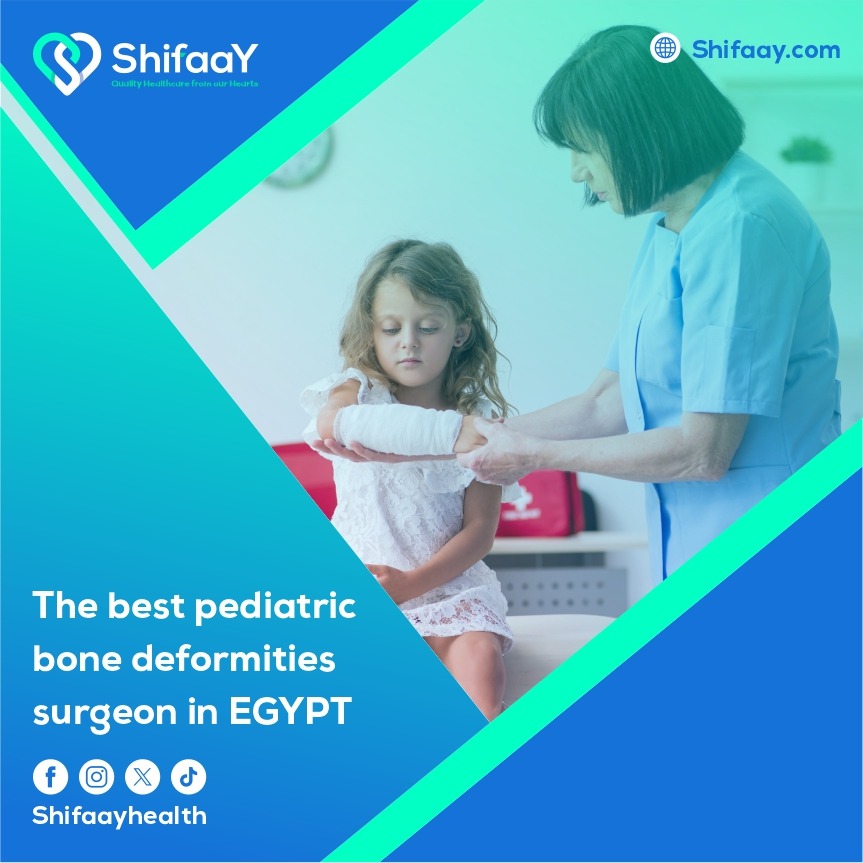
When it comes to treating bone problems in children, it is usually best to consult Shifaay’s pediatric bone deformity doctor who has extensive experience, full knowledge of how to handle all medical cases, and the ability to treat such cases with ease and great professionalism. Despite the various forms and images of bone deformities in children, such as bony prominence, column deformities, the vertebral column, and the bone palace, the role of Shifaay’s pediatric bone deformity doctor in Egypt is highlighted as one of the most effective, skilled, successful, and trailblazing doctors in the field of pediatric orthopedics in Egypt and the Middle East, due to his extensive experience and skill. Shifaay’s doctor is highly skilled in examining, diagnosing, and treating all skeletal issues. He also determines the most efficient treatment plans that can help deliver the best medical care by utilizing the most recent techniques and advanced technological medical procedures that play a vital role in delivering the best medical care possible that meets the highest standards of quality and effectiveness.
Therefore, get up right now and give the Shifaay Center, the best medical tourism center in Egypt a call as soon as possible if your child has a bone deformity and you would like to work with the best pediatric bone deformity doctor in Egypt. He will be able to examine and diagnose the child’s medical condition with great professionalism and skill, and he has sufficient experience dealing with all structural problems and prescribing medications suitable for every case. This is in order to prevent the child from contracting any other dangerous diseases as well as to ensure that the medical condition does not worsen.
Also follow: The cost of shoulder tendon rupture surgery in Egypt
Who is the best pediatric bone deformity doctor in Egypt?
Shifaay’s doctor is considered the best pediatric bone deformity doctor in Egypt. He is one of the most famous, competent, pioneering, and successful doctors in the field of pediatric bone deformity in Egypt and the entire Middle East. This accomplished doctor has extensive experience and knowledge in treating all types of bone deformities in children with extreme skill and precision. This is based on the best and most recent technologies, as well as the most effective capabilities, all of which contribute to providing the highest quality medical service possible.
What are the criteria for choosing a pediatric bone deformity doctor?
When deciding which pediatric bone deformity doctor in Egypt to see, you should make sure the doctor has enough training in both science and practice, is recognized as an expert, and has the full trust of all the patients who have previously undergone his care. Additionally, the doctor should be extremely skilled and professionally equipped to handle all types of pediatric bone deformities.


